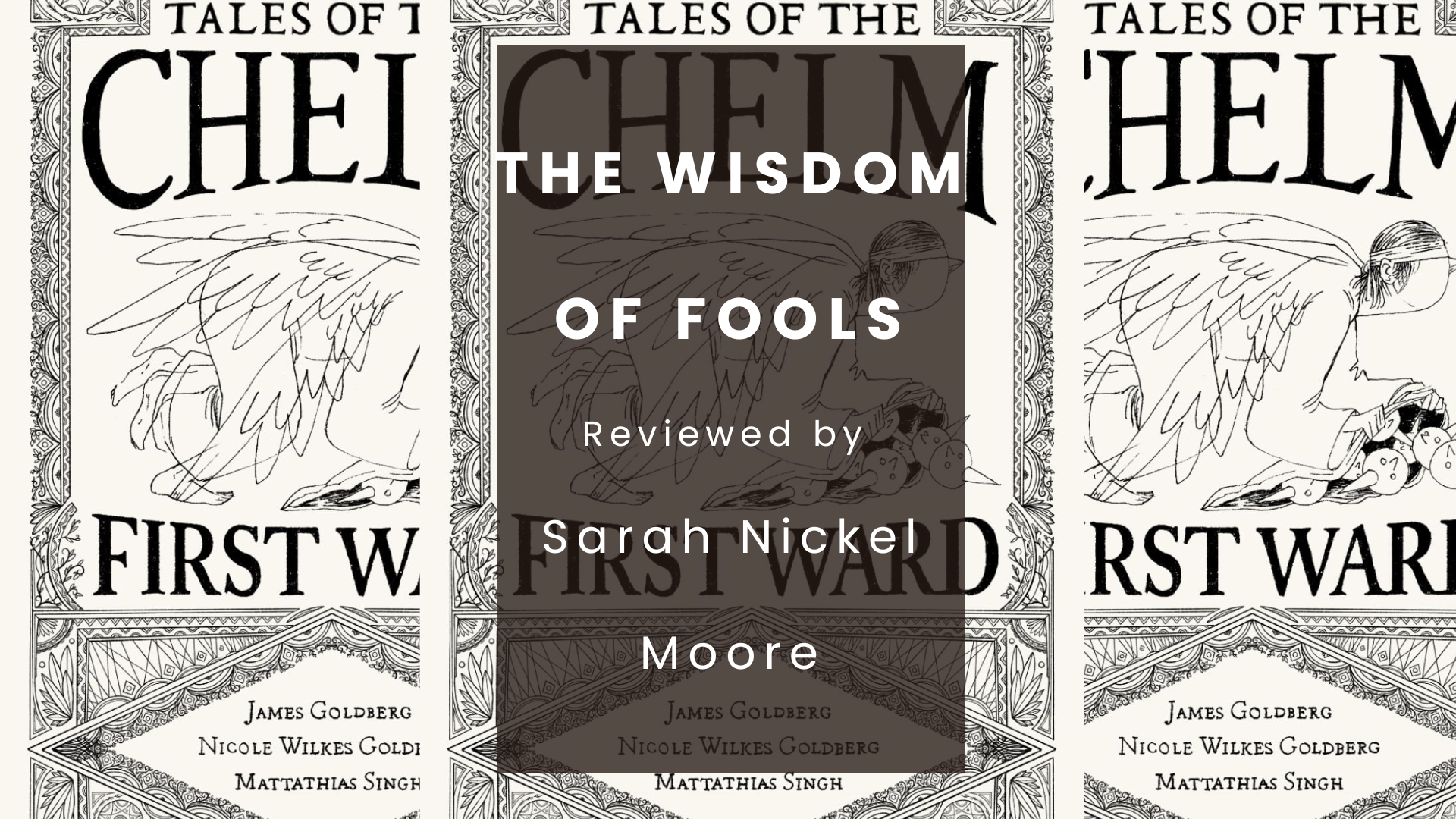Articles/Essays – Volume 58, No. 2
The Wisdom of Fools | James Goldberg, Nicole Wilkes Goldberg, and Mattathias Singh, Tales of the Chelm First Ward
Picking up Tales of the Chelm First Ward is rather like picking up a chunky, beaded necklace that you might find at an esoteric gift shop that smells of incense and sells various crystals, tarot decks, and innocuous souvenirs for your loved ones back home. (You would be just as likely to find such a shop off the Royal Mile in Edinburgh, Scotland, as on a gravel road in McMinnville, Tennessee.) The necklace has a nice heft; the beads are a bit eclectic and chaotic but, taken together, they form a delightfully cohesive piece of art.
Tales of Chelm is a delightful collection of short stories centering on the follies of a small church congregation in Chelm, Poland. You, of course, already know that Chelm is (in)famous for the disproportionate number of fools that live there, due to an accident when the angel of God who was assigned to evenly distribute fools around the world tripped in Poland, leaving the town “fool-flooded and wit-less” (xii). Each of the stories offers the kind of guileless wisdom you could only find in a place where “the wisdom of the world is foolishness with [Chelm]” (1 Cor. 3:19). Indeed, when visiting Chelm you will almost certainly encounter Fruma Selig, a Relief Society president who loves to magnify her calling and who recently learned, much to her distress, that it is tragic to have a child marry “outside the church” (4). You may watch as Fruma carries this news to the ward council, where they earnestly discuss what exactly it means to marry “outside the church.” It may take several meetings and a well-intended, but confusing, church activity, but they will finally determine that marrying in the Church means to marry someone who lives within the geographical boundaries of the Chelm First Ward. And although this discovery is a comfort to Fruma, who has one daughter soon to be married at the local city hall, she is also heartbroken for her other daughter, who will be tragically married in the distant Latter-day Saint temple in Freiburg, Germany. You may be tempted to correct Fruma, to explain that a marriage that starts in a temple is exactly the kind of “in” marriage encouraged by church leadership. But you pause. And you listen. And you realize that, perhaps, the secret to a happy marriage lies more in the ongoing support of a community, and less in a single location. And like Fruma, you begin to suspect that “everything was somehow all right” (19).

Perhaps I misspoke earlier. Reading Tales of Chelm is less like choosing a beaded necklace and more like returning to your childhood school. You walk through the same double front doors. The main hallway still leads through the school. You walk into the classroom where you spent countless hours staring out through the window. The desks are even in the same place, the pencil sharpener still hangs from the wall, and the floors are still the same scuffed linoleum tile. But the posters are different. And the walls of the classroom seem shrunken, as if you don’t quite fit properly in this room anymore. The tree outside the window is larger, while the desks inside seem smaller. When you visit the Chelm First Ward, everything seems to be in its proper place, but somehow . . . different. Everyone in the congregation has a calling, the ward council is well intentioned and ineffective, the primary children sing with gusto—even the foyer has well-worn couches, scuffed walls, and regular attendance.
And yet.
And yet the people of Chelm invite you to see the familiar in a new way. Zelda invites you to see the foyer as a place of quiet worship, where the small tear in the couch and orange crayon mark on the wall are evidence of community. Bishop Levy asks you how to assign callings to difficult members, despite knowing that “God did not have a strong track record of stopping people just because there might be a disaster” (108). You even find yourself reconsidering the adage of the wise man and the foolish man, when an object lesson reveals that structures built on a pile of hard rocks are more likely to fall down than those built on a bed of soft sand. You find yourself singing along with the Chelm First Ward Primary:
The wise man built his house so it would stand
The wise man built it somewhere on the land
The wise man built a house like God had planned
And he didn’t let the rains get him down.
About three-quarters of the way through Tales of Chelm, you start to get a little worried. These people are starting to make sense, you realize. You step away from the book for a bit to pick up something familiar, something grounding. Perhaps, like me, you reassure yourself with the cadences of Chaucer, peel an orange, and go for a walk. You then pick up the book back up and return to Chelm.
You find yourself in bed with Shayna and her despondent husband. Since moving to Chelm, Stefan has become more and more disoriented as he tries to make sense of the town’s chaos. Trying to comfort her husband, Shayna retells the old Jewish tale of the rabbi and the king. The kingdom’s grain supply is tainted, she says, and will cause everyone to go mad. There is only enough good grain left for two people, who could remain sane while everything around them spins into chaos. They choose, together, to reject sanity and eat the tainted grain along with the rest of the kingdom with the precaution that they mark their foreheads first, so that when they gaze upon each other they will know that “of all the people in the world, we, at least, will know that we are insane” (257).
You gaze at the book. The book gazes back. And you sigh softly, accepting, perhaps, that you, like the rest of Chelm and perhaps the world, are insane.
James Goldberg, Nicole Wilkes Goldberg, and Mattathias Singh. Tales of the Chelm First Ward. By Common Consent Press, 2024. 400 pp. Paper: $13.95. ISBN: 978-1-961471-03-0.


 Back to full Issue
Back to full Issue

